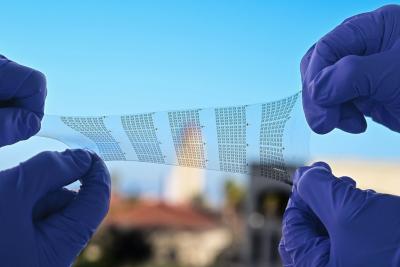Researchers from Stanford, led by prof. Zhenan Bao, developed skin-like stretchable electronic devices, using ag new design and fabrication process. The researchers say that the newly developed methods enable devices that are five time smaller and one thousand faster than their previous devices.
The new stretchable devices are powerful and fast enough to drive microLEDs, and indeed the researchers demonstrated driving 60Hz microLED arrays. The devices can also be used to drive sensors.
The new circuit are made from carbon nanotubes, and soft elastic electronic materials developed in Stanford. Unlike silicon, which is hard and brittle, the carbon nanotubes sandwiched between elastic materials have a fishnet-like structure that allows them to continue to function while they stretch and deform. The transistors and circuits are patterned onto a stretchable substrate, along with stretchable semiconductor, conductor, and dielectric material.
This research work was funded by SAIT, Samsung Electronics, Army Research Office, CZ Biohub-San Francisco, Stanford Wearable Electronics Initiative, and the National Science Foundation.


